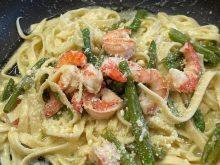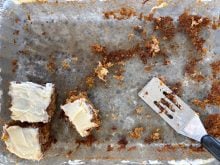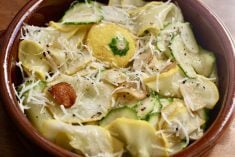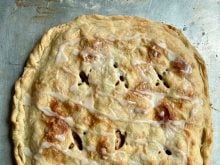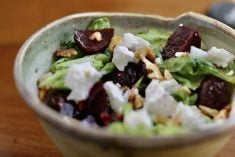I find it interesting how an item can evoke so many memories and thoughts.
I was cleaning a cupboard recently and discovered a collection of china teacups. One brought back a landslide of memories and triggered thoughts and comparisons to current events.
This teacup had been my paternal grandmother’s. My brothers and I called her Nanny; to others she was Martha. It was the cup she used at each meal and faithfully rinsed out and placed on a tea towel to dry. She had a smaller teacup for me in which I would get a little tea in a half-cup of milk with a sugar cube.
Read Also

Fuel rebate rule change will affect taxes and AgriStability
The federal government recently announced updates to the fuel rebates that farmers have been receiving since 2019-20.
I have such fond memories of our shared tea times. A favourite addition with the tea were toasted teacakes. There was a bakery called the Little Pie Shop just a block from where Nanny lived in Regina and we would often stop there to purchase teacakes.
Nanny grew up near the small community of Hurst Green in Lancashire, England. In 1912, her older brother George and her fiancée, Thomas Pearson, sailed to Canada in search of land and opportunity. Nanny’s father would not allow her to go as she was not yet 21. He hated the thought of her going so far away and felt he would never see her again.
Four months after her 21st birthday Martha was in Regina and married Thomas on Dec. 6, 1913.
During the next five years they worked hard to achieve their goals, first as a hired couple for a farmer in the Grand Coulee area, just west of Regina.
Then they tried their hand at homesteading near Tisdale but chose to return to the Grand Coulee area, where there was no bush to clear. In Grand Coulee Thomas worked as a grain elevator agent and they bought a small house, where my father was born. Finally, they bought a farm just south of town. They were a busy young couple fulfilling their dreams.
Then in the fall of 1918, the Spanish flu pandemic swept in. All three of them, Thomas, Martha and my two-year-old father, Gilbert, came down with the flu.
Grain dust allergies weakened Thomas’s lungs but still he got up from his sick bed to look after their livestock. I was told “he took a chill and died.”
Most people were self-isolating to reduce the spread of the illness and a white tea towel was tied to the door handle to let others know that someone had died and needed to be buried. In just a few days Nanny’s life was forever changed.
My thoughts turned to how Nanny would have coped with their illnesses. A jar of home canned chicken probably was turned into a pot of chicken soup, mustard plasters for the chest to help loosen the congestion and of course, lots of hot tea.
Nanny and her son, my dad, recovered from the flu, but without Thomas their dreams were lost.
Nanny returned to England for a couple years, then she came back to Canada to pursue new dreams and opportunities. She was a strong determined woman, working as a housekeeper to support herself and her son. Eventually she remarried.
In many ways her and Thomas’s dreams were fulfilled: their son, my dad, became a successful farmer and they now have 24 descendants. But I grieve for the father my dad didn’t have and the grandfather we never knew.
During the years, Nanny kept in contact with her family through letters, photos and a few visits.
As we currently cope with the worst pandemic since 1918, I am thankful that we have telephones, e-mail, and facetime to stay connected with our children and grandchildren. I am also grateful for our health-care system and modern medical techniques.
I also think of those who have lost loved ones and their personal dreams. My heart aches for them. As Nanny demonstrated with her life, it is possible to move on and pursue new dreams.
English tea cakes
This is not a cake at all, despite the deceiving name, but rather a yeast-risen sweet bun enriched with eggs, milk and dried fruit. Traditionally, the buns are cut in half, toasted, and served with butter and jam for breakfast or afternoon tea.
This recipe is an adaptation from a notebook of recipes Nanny brought with her from England. Serves six.
- 3/4 c. milk 175 mL
- 2 tbsp. butter 30 mL
- 1/2 c. water 125 mL
- 3 c. white bread flouror whole wheatbread flour 750 mL
- 2 tbsp. sugar 30 mL
- 2 1/4 tsp. quick rise yeast 8g
- 1 tsp. salt 5 mL
- 1/4 tsp. cinnamon 1 mL
- 1/8 tsp. ginger powder .5 mL
- 1/8 tsp. ground cloves .5 mL
- 1/2 c. mixed dried fruit (peel, sultana raisins, and currants)
- oil for greasing
- 2 eggs, beaten
- 1 tbsp. water 15 mL
Warm milk and butter in a pan until butter melts, remove from heat, add water to cool to 120 to 130 F (50 to 55 C) use a thermometer to be accurate. Milk and butter could be heated on half power in a microwave to melt butter.
Place flour, sugar, yeast, salt and spices in a bowl, making sure yeast is on the other side of the bowl to the salt.
Put dried fruit in a small bowl, cover with boiling water, let stand 10 minutes to plump the fruit, drain well.
Beat one egg in a separate bowl.
Make a well in flour mixture and pour milk mixture in, add beaten egg and mix until dough forms big flakes, place dough on a counter and knead until smooth, about five minutes.
Dough can be made in a bread maker or mixer with a dough hook.
Once dough is well-kneaded, add well-drained dried fruit and knead to evenly disperse fruit.
Place dough in large, lightly oiled bowl, cover with a damp tea towel and place in a warm place until doubled in size, about 20 minutes. I like to put my covered bowl in my clothes dryer that has been recently used and is still warm.
Line a baking sheet with parchment paper. Divide dough into six pieces. Shape into balls by folding dough under itself, flatten balls into a thick pancake shape. Place evenly on baking sheet, using palm of hand press down dough to about 1/2-inch thickness, to create a teacake shape.
Cover loosely with parchment paper, let rise until doubled in size, 30 to 45 minutes.
Meanwhile, preheat oven to 350 F (180 C). Beat second egg and water together and liberally brush top of buns. Place in middle of oven and bake 20 minutes until buns are golden and well risen.
Allow to cool on a wire rack, then slice in half, toast, and slather with butter.
Baked teacakes freeze well.
Mustard plaster for chest congestion relief
This is an old family recipe that was used whenever we had a chest cold.
- 1/4 c. Keen’s dry mustard powder 60 mL
- 1/2 c. flour 125 mL
- 6 tbsp. warm water 90 mL
Place mustard powder and flour in a bowl. Mix well.
Add water a tablespoonful at a time while mixing ingredients into a smooth paste.
Use four layers of cheese cloth or a flattened brown paper bag, about double the size of the chest. Apply mustard paste to one half of the cloth or bag, fold the other half over the paste. Wrap in a piece of flannelette to protect the chest.
Place mustard plaster on the bare chest for half an hour or less if experiencing discomfort. Only use once a day.
To avoid burns do not apply paste directly to bare skin.
Using The Garden Harvest
Harvesting the garden and storing the produce for the winter months are common fall activities. Most families have favourite recipes that are particularly enjoyed when made with freshly harvested fruit and vegetables.
We would love to share your family’s favourites. Please send them to Harvest Favourites at team@producer.com or mail them to:
The Western Producer,
1000–3530 Millar Avenue,
Saskatoon, SK S7P 0B6
All entries must be received by November 8, 2021.
Betty Ann Deobald is a home economist from Rosetown, Sask., and a member of Team Resources. Contact: team@producer.com.



